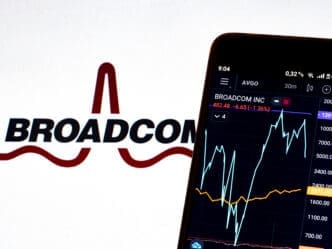Executive Summary
The Story So Far
Why This Matters
Who Thinks What?
The Ethereum network is set to implement a significant advancement with the Fusaka upgrade, scheduled for deployment on the Hoodi testnet on October 28, 2025. This critical phase will serve as the final testing ground before a tentative mainnet rollout on December 3, 2025, aiming to bolster network efficiency, reduce operational costs, and enhance scalability for users.
Final Test Phase Before Mainnet Activation
Ethereum developers confirmed the Fusaka upgrade’s deployment schedule on the Hoodi testnet during the All Core Devs Consensus (ACDC) meeting on October 16. This marks the last major testing stage before its activation on the main Ethereum network.
The Hoodi testnet, launched earlier this year, was specifically designed to closely replicate Ethereum’s mainnet conditions. This allows developers to thoroughly assess the Fusaka upgrade’s performance under real-world scenarios, ensuring stability and functionality.
Prior to Hoodi, the Ethereum team successfully tested Fusaka on the Holesky and Sepolia testnets, both of which reported smooth outcomes. These successful trials have prepared the way for this final rehearsal, ensuring all technical components and validator processes operate as intended.
Purpose and Design of the Fusaka Upgrade
Coming months after Ethereum’s Pectra upgrade, Fusaka focuses primarily on improving scalability and reducing transaction costs. It introduces a key feature known as PeerDAS (Peer Data Availability Sampling), a data verification method.
PeerDAS allows validators to handle only portions of transaction data, often referred to as “blobs.” By processing smaller data sets, this method significantly reduces bandwidth requirements and enhances data efficiency across the network.
This change is expected to lower fees, particularly benefiting layer-2 networks and institutional clients that heavily rely on Ethereum’s infrastructure. Developers anticipate the Fusaka upgrade will make Ethereum more competitive by easing congestion during periods of high network activity.
Developer and Community Outlook
The Ethereum development community has expressed optimism regarding the upgrade’s potential benefits. During the ACDC meeting, contributors underscored the importance of the Hoodi testnet launch as a final, crucial step before mainnet activation.
Community members view Fusaka as another advancement in Ethereum’s ongoing evolution toward greater efficiency and scalability. The upgrade builds upon previous transitions, such as The Merge and the Pectra upgrade, which refined consensus and data management mechanisms.
Investor and television personality Kevin O’Leary recently highlighted Ethereum’s network performance issues, noting that transaction fees surged above $1,000 during a recent market downturn, which he deemed unsustainable. Developers believe upgrades like Fusaka will help mitigate such congestion problems and stabilize costs.
Next Steps for Ethereum
Should the Hoodi testnet launch proceed without issues on October 28, developers are expected to confirm the December 3 mainnet activation date shortly thereafter. This timeline will provide ample opportunity for validators and node operators to prepare for the transition.
Ethereum’s steady upgrade cycle continues to evolve its structure and capabilities. With Fusaka nearing its final test phase, the network aims to solidify its position as a leading platform for decentralized applications and enterprise blockchain use cases.








